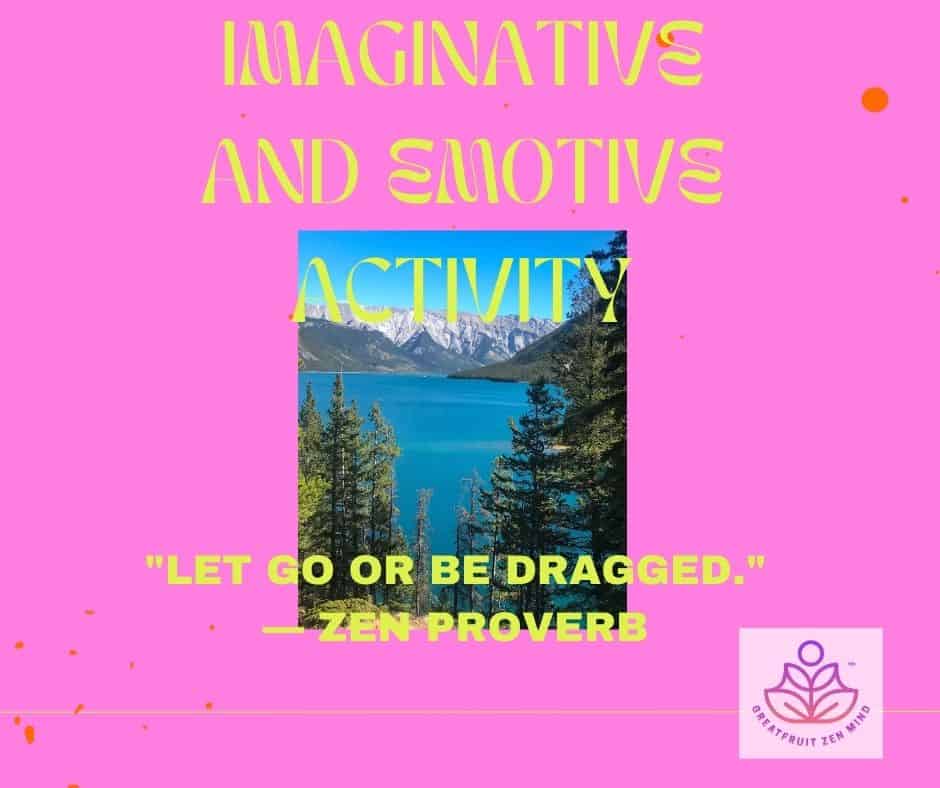Read time 3 minutes. Explore the vicious cycles that arise as a result of our imaginative/emotive activity. This stand alone article is part of our letting go series.
In our last lesson, we saw how emotions are born from a disconnect between intellect and instinct. Today, we look closer at how that disconnect gets amplified—and why our emotional responses often grow larger than the event that sparked them.
The answer, not surprisingly, is the imagination.
When reality isn’t enough
We’ve already touched on the ego’s tendency to form feedback loops—cycles of perception, emotion, and reaction that reinforce themselves. But what feeds these loops?
Imaginative activity.
Put simply: the ego is more invested in its imagined version of reality than in reality itself.
Of course, reality itself is slippery. There’s illusion baked into everything. But when we speak of “reality” here, we mean the formal world—what actually happens, not the endless conceptual reenactments that follow.
And the ego doesn’t want what actually happens. It wants what should have happened. What could still happen. It wants its ideal scenario. And when that doesn’t match what is, the story begins.
How emotion gets hijacked
Instinct is caught in the middle. A threatening event occurs. Emotion rises as a natural response. If left alone—without fueling the mind’s machinery—this emotion would usually settle. It would resolve. The system would reset.
But the ego doesn’t leave it alone.
The imagination kicks in. It spins. It revisits. It invents.
Suddenly, the animal instinct is no longer reacting to one real event—it’s reacting to a thousand imagined ones. It’s stuck inside a loop, bombarded by ghost versions of the thing that hurt or startled it.
Each new thought? Feels real.
Each replay? Triggers the same response.
Each loop? Harder to stop than the last.
This is how worry works. This is how self-doubt and anger mutate into something bigger. The event passes. But the mind doesn’t let go. And the body doesn’t get a break.
Imaginative and emotive activity happens with joy, too
This isn’t just a negative loop problem. It works the same in reverse. We daydream about positive things—love, success, recognition—and become just as disoriented. We drift from presence either way.
Whether the story is beautiful or terrifying, the price is the same: we lose now. And with it, we lose any real identification with Tao.
Why this matters
The body was never built to endure sustained, cyclical stress. And that’s what our imagination keeps serving. Finding a way to break these loops—gently, mindfully—is not a luxury. It’s a necessity.
We’ll explore how to begin that work in the next lesson.
–
Support the mission—it keeps the lights on.
Join The Undercurrent—it keeps you in the loop.
(Or do both!)
Explore more:
Interested in the history or our understanding of emotion and the evolution of psychology regarding them? You will never find a deeper dive on the subject of emotion than you will in this article on the National Library of Medicine.
Photo by Angie Fritz
🌀 From the GZM Archives – Polished, Preserved, Still Relevant.


Leave a Reply